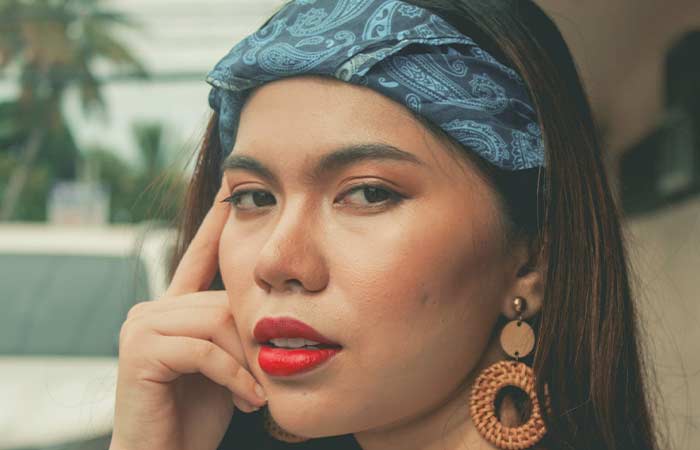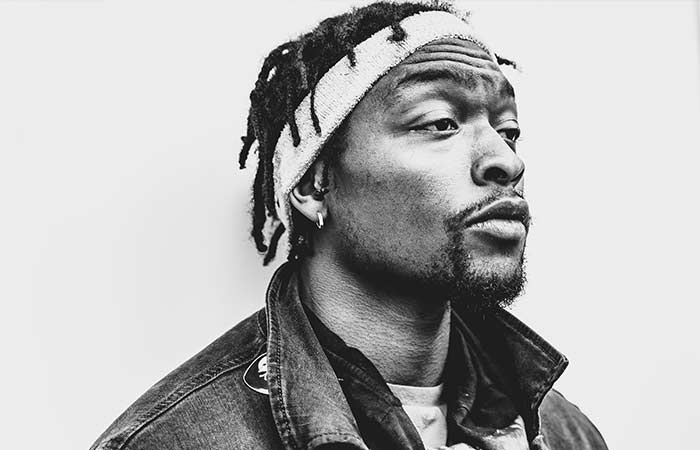Are Headbands Bad for Hair & Hairline?
Headbands are a common hair accessory that can be used in versatile hairstyles. Unfortunately, they can be harmful to your hairline causing breakage and thinning of the hair.
Headbands themselves aren’t bad, but they can be harmful to your hair and hairline depending on the type of headband, the material used to make the headband, and how you wear the headband. The band could cause damage to your hairline and hair by pulling the hair strands, disrupting the hair pattern, and thinning the hair.
Let’s discuss which headbands are safe and unsafe for your hair, plus great ways you can prevent damage to your hair.
Headband Possible Hair Damages
Headbands aren’t harmful to your hair, it’s all about how you wear the headband, and the material used to make the headband. Possible damages occur when the headband is placed too tightly around the hairline causing strain to the hair strands which eventually break away.

Other hair damages are caused by the wrong headband materials, such as:
Elastic
These headbands have the tightest grip and could cause the most damage to your hair. They cause tension on the frontalis muscles, muscles along your forehead, which causes discomfort.
The newer or tighter the elastic band is, the more damage can be done to the hair and the scalp. It can cause scalp sores and tenderness, hair tugging on baby hair, hair loss, and even tension/ tension headaches.
Textured headbands
These types of headbands have teeth, clips, or mini combs attached that could pull against your hair or tear the hair strands from its follicles causing pain and damage to your hair roots.
Their sharp and textured ends can also cause split ends, especially if you keep readjusting the headband. Lastly, it can result in a receding hairline or traction alopecia in the long run, because of the constant stress you put on your frontline hair.
Full headbands
These are coverings such as scarves and athletic headbands that cover the entire head can cause serious damage to the hair starting with hair dents around where the headband is placed.
They cause strain to the hair in general and mostly affect curly hair as they disrupt the curl pattern on the hair.

How Should you Wear them to Avoid Damages?
Headbands should be hair accessories that enhance your look and not cause strain or unhealthy hair habits. Hence, to avoid hair damage, you should endeavor to choose them and wear them the right way to avoid damage. Here are a few tips you can use to ensure so;
- Check the tension on the headband before you wear it. If it presses against your scalp, avoid it.
- Wear the headband at least two inches from the hairline to spare extra tension on the frontalis muscles of the hairline. This can help prevent traction alopecia.
- Use good scarves or headbands with soft and favorable materials like silk or satin.
- Always wear the headband loose.
- Go for thicker-type headbands. The thicker they are the less strain they evert on your hair. A good example is those hefty sports headbands that can even absorb sweat from your head.
Are there Headbands that Don’t Damage Hair?
Yes, headbands don’t always have to be bad. Some headbands won’t damage your hair, based on the material.
Headbands can be made from just about the material and can be attached with even more things like plastic, metals, wood, bone, and hemp. These are the features you should look into to avoid getting the wrong headband that’ll damage your hair.
For headbands that won’t damage your hair, go for any of these options;
- Soft fabrics – by soft fabrics, we mean headbands made from silk or satin. The same material as your sleeping bonnet. The texture is smooth and won’t add pressure to the hair as it simply lays on your hair.
- Cloth – you’re often told to use a cloth rather than a towel to dry your hair. The same reason applies here. With a cloth, there’s less friction between your hair and the piece of cloth. This won’t damage your hair nor remove any moisture from the hair. Good cloth examples are microfleece, polyester, and terrycloth.
- Ponytail bands – even though we’re against these fully covered headbands, these ponytail types have a thicker material that won’t press so firmly on the hair causing damage.
- Turbans – often worn by Sikhs, turbans are a headwear dome by cloth winding that covers the entire head including the hairline. What’s good about turbans is that they’re made from safe materials like velvet, cotton, lace, silk, and satin.
FAQS
Are Non-Slip Headbands Damage-Free?
Non Slip headbands are often tighter than an ordinary headband, but that doesn’t mean they will automatically damage your hair. The two things you should consider are how it grips/holds your hair so it’s not too tight to strain your hair or curl pattern.
Two, the non-slip should be made with a material that will suck out the moisture from your hair leaving your hair vulnerable and easy to break. Lastly, because it’s non-slip, it could have metal or plastic clippings for extra support. Avoid those and go for material only headbands such as those used in sports.
Are there Headbands for Thin Hair?
Thin hair is very vulnerable and more prone to hair damage than thick coarse hair. While there aren’t specific headbands for thin hair, there are better options for those with thin hair. Stick to silk and satin headbands as they only hold loose and would add volume without straining it.
Secondly, don’t place the headbands near the hairline, but more to the midsection where the hair is mostly.
Is it Bad to Sleep with a Headband?
If you choose to sleep with your headband, make sure it won’t add any tension to your hair or hairline, lest you risk hair damage. Otherwise, you can sleep with your headband as long as it’s safe for your hair.